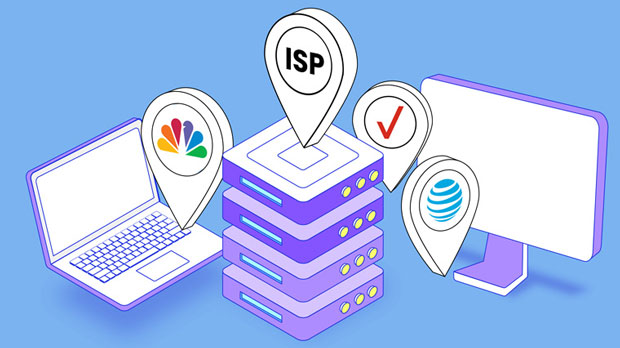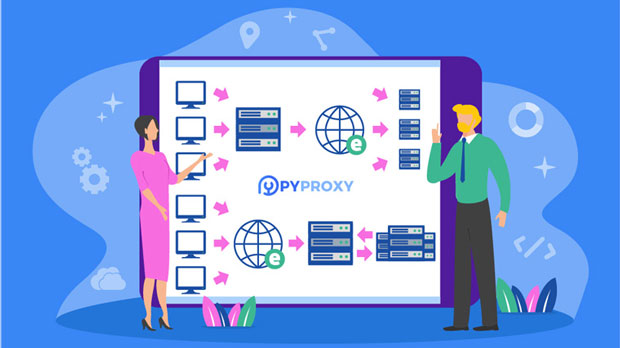What is Free and Fast SOCKS5 Proxy? What are its basic features?
A socks5 proxy is a type of internet protocol that acts as an intermediary between a user's device and the internet. It allows users to hide their real IP address, offering greater privacy, security, and freedom online. Unlike traditional proxies, SOCKS5 operates at a lower level of the networking stack, making it more flexible and capable of handling a wide range of internet traffic, including that for streaming, gaming, and torrenting. A "free and fast" SOCKS5 proxy refers to a proxy service that is provided at no cost, with an emphasis on delivering high-speed performance for its users. While free proxies can sometimes be slower and less reliable, a well-implemented free socks5 proxy can offer sufficient speed and functionality for everyday use. In this article, we will explore the core functions, benefits, limitations, and practical considerations of using a free and fast SOCKS5 proxy. What is SOCKS5 Proxy?A SOCKS5 proxy is a specific version of the SOCKS (Socket Secure) protocol that facilitates the routing of internet traffic through a proxy server. SOCKS5, the most recent version, supports both TCP and UDP protocols, making it versatile for various types of online activities. Unlike standard proxies that work only with specific applications or protocols (like HTTP), SOCKS5 can handle all types of internet traffic, including email, browsing, and file transfers, providing a more comprehensive solution for users.When a user connects to the internet through a SOCKS5 proxy, their internet traffic is rerouted via the proxy server. This means that the server assigns a different IP address, thus masking the user’s real IP address, which can enhance privacy and security. Additionally, socks5 proxies can offer users the flexibility to bypass geographical restrictions by connecting to servers located in different countries, making it ideal for accessing restricted content.Key Functions of a Free and Fast SOCKS5 Proxy1. Privacy and AnonymityOne of the core functions of a SOCKS5 proxy, whether free or paid, is to enhance user privacy. By masking the user's IP address, the SOCKS5 proxy prevents websites and online services from tracking their real identity or location. This is particularly useful when engaging in activities like browsing the internet, downloading files, or using online services without revealing personal information.Free SOCKS5 proxies provide this benefit at no cost, though they may come with some limitations, such as lower connection speeds or more frequent disconnections. However, for basic internet browsing, these proxies can still offer a level of anonymity that helps users maintain their privacy while online.2. Access to Geographically Restricted ContentAnother major advantage of using a SOCKS5 proxy is the ability to bypass geographic restrictions on content. Many online platforms restrict access to certain media, websites, or services based on the user’s location. By using a socks5 proxy server located in a different country, users can appear as though they are accessing the internet from that location, thereby accessing region-blocked content such as streaming services, websites, and social media platforms.For users looking for a free way to access such content, a free SOCKS5 proxy offers a cost-effective solution. However, the speed and reliability of these proxies can vary, so they may not always be ideal for high-bandwidth activities like streaming HD video or online gaming.3. Improved Online SecuritySOCKS5 proxies also offer a degree of security for online users. While not as secure as encrypted VPNs, SOCKS5 proxies can still help protect users from certain online threats. For instance, SOCKS5 proxies can prevent third-party observers from directly accessing a user's IP address, offering a layer of protection against cyberattacks, such as Distributed Denial of Service (DDoS) attacks.For free users, the security level provided by a free SOCKS5 proxy might be limited compared to paid services. However, it still offers a more secure way to browse the internet than directly exposing one's real IP address, particularly when accessing potentially unsafe websites or engaging in sensitive online activities.4. Enhanced Speed for Specific ApplicationsA significant advantage of SOCKS5 over other proxies is its ability to handle a variety of protocols, including both TCP and UDP. This makes SOCKS5 proxies particularly well-suited for applications like gaming, video streaming, and torrenting. While free SOCKS5 proxies can sometimes be slower than premium services, they still offer good performance for specific tasks that require fast, uninterrupted data flow.For example, online gamers often rely on SOCKS5 proxies to reduce latency and prevent throttling by internet service providers (ISPs). Free SOCKS5 proxies may still provide decent speed for these applications, although users should be aware that connection speeds may fluctuate depending on server load and location.Limitations of Free and Fast SOCKS5 Proxies1. Limited Speed and PerformanceOne of the most significant drawbacks of free SOCKS5 proxies is that they tend to have slower speeds compared to paid versions. Free proxy servers usually have fewer resources, such as bandwidth and server locations, which can lead to congestion, slower speeds, and even connection dropouts during peak usage times. While free SOCKS5 proxies are often sufficient for casual browsing and basic online activities, users who need faster, more reliable performance—such as for HD video streaming, large file downloads, or competitive online gaming—might find the speed limitations frustrating.2. Unreliable Server AvailabilityAnother issue with free SOCKS5 proxies is that they may experience downtime or reduced availability. Since these proxies are offered at no cost, the providers may not have the resources or infrastructure to ensure consistent uptime or server reliability. Users may encounter disconnections, unstable connections, or the inability to connect to a proxy server at all.This problem can be especially annoying if the user relies on the proxy for important tasks. While paid services typically offer guaranteed uptime and 24/7 customer support, free SOCKS5 proxies may leave users with no recourse if they experience issues.3. Limited Security FeaturesAlthough SOCKS5 proxies provide a layer of anonymity by masking the user's IP address, they do not offer the same level of encryption as VPNs. Free SOCKS5 proxies may also lack additional security features, such as advanced encryption or protection against DNS leaks. As a result, they may be more vulnerable to certain online threats, such as hacking or surveillance by third parties.For users who prioritize security above all else, a free SOCKS5 proxy might not provide adequate protection. In these cases, it might be worth considering a paid option or an alternative like a VPN that offers stronger encryption and security features.Practical Considerations When Using Free SOCKS5 Proxies1. Usage LimitationsFree SOCKS5 proxies often come with limitations in terms of the number of users who can connect to the service at any given time. High traffic can lead to slower speeds, reduced performance, or even complete service interruptions. For individuals who rely heavily on a proxy for daily activities or work, a free SOCKS5 proxy may not be the most reliable option.2. Legal and Ethical ConsiderationsWhen using free SOCKS5 proxies, users should be mindful of legal and ethical considerations. Some proxy servers may be used to access content or services in violation of terms of service agreements or local laws. While the proxy itself might provide a way to bypass geographical restrictions or anonymity, it is essential to be aware of the potential legal implications of using such a service.ConclusionIn summary, a free and fast SOCKS5 proxy can offer valuable benefits for users seeking enhanced privacy, access to restricted content, and increased security for certain online activities. However, these proxies come with limitations, including slower speeds, less reliable server availability, and reduced security features. Users should weigh these factors carefully before deciding to rely on a free SOCKS5 proxy for their online needs. While they can serve as a cost-effective solution for casual browsing and light internet use, those who require more robust and consistent performance may ultimately need to consider other options.
2025-01-07

























































